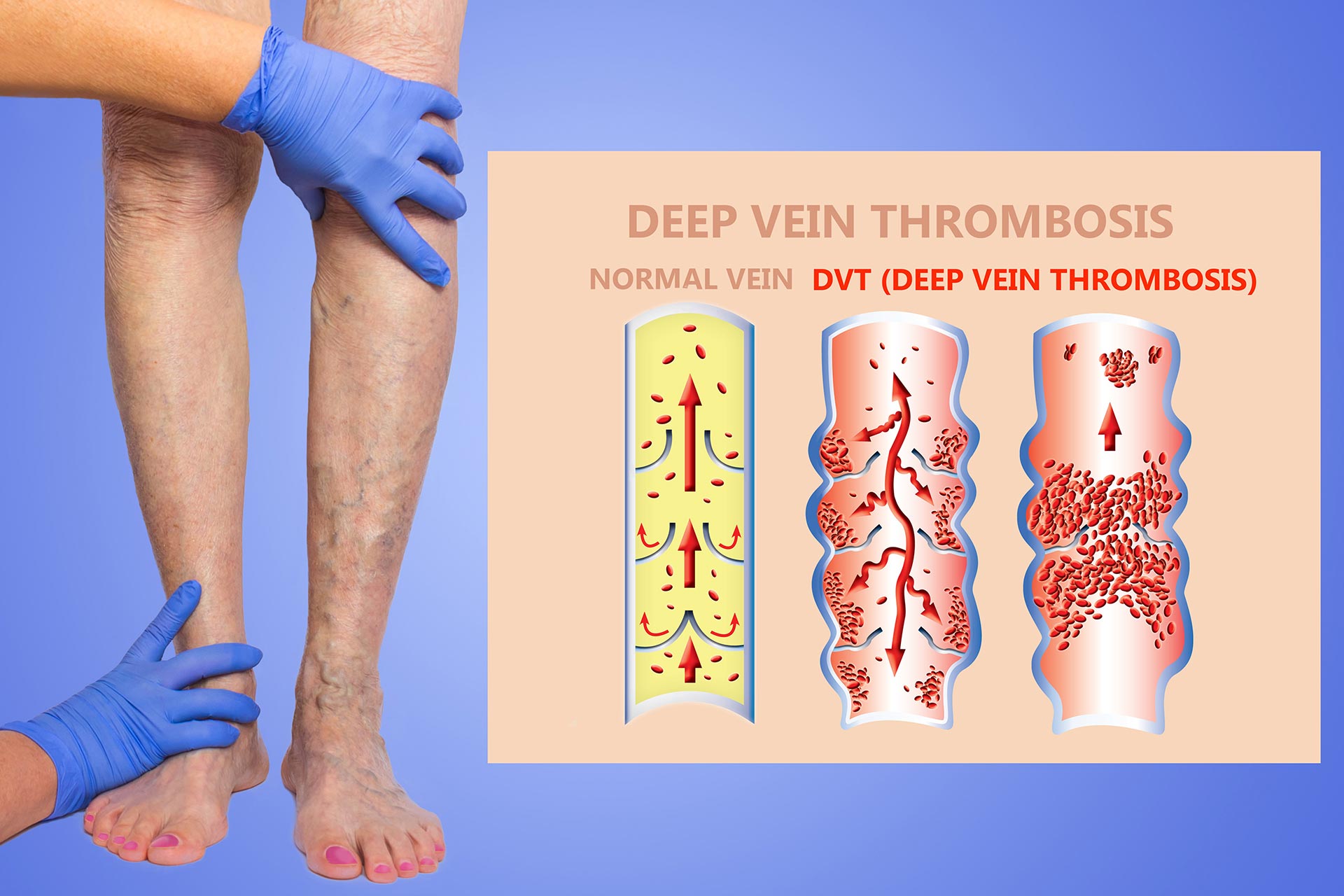March is a meaningful month for raising awareness about a potentially life-threatening condition affecting millions around the world. Deep Vein Thrombosis Awareness Month (DVT Awareness Month) means to educate people about the risks, prevention, symptoms, and treatment options associated with DVT. It is more necessary than ever to understand deep vein thrombosis, its impact, and how we can work together to reduce its prevalence.
What is DVT?
Deep Vein Thrombosis (DVT) happens when a blood clot is formed in one or more of the deep veins in the body. While these clots can develop anywhere in the body, they most commonly occur in the lower extremities. DVT can lead to severe complications if the blood clot breaks loose and travels up through the bloodstream, reaching the lungs and causing a pulmonary embolism (PE), which can be fatal.
DVT is not only a medical concern but a global health issue. According to recent studies, DVT affects approximately 900,000 people annually in the United States alone, with thousands of deaths attributed to complications like PE. This makes DVT Awareness Month a critical time to learn and be empowered to take preventive measures.
Causes and Risk Factors of DVT
Understanding the causes and risk factors of deep vein thrombosis is the first step toward prevention. While anyone can develop DVT, certain factors increase the likelihood:
Symptoms of DVT
Recognizing the primary symptoms of deep vein thrombosis is crucial for early detection and treatment. Common symptoms include:
- 1
Swelling in the affected leg (usually one side).
- 2Tenderness or pain, often starting in the calf.
- 3Warmth and redness over the affected area.
- 4Visible veins that appear larger than usual.
However, up to 50% of DVT cases may be asymptomatic, making regular screenings and awareness even more critical, especially for high-risk individuals.

Diagnosing DVT
If you suspect DVT, seek medical attention immediately. Doctors typically use some of the following methods to diagnose deep vein thrombosis:
Treatment Options for DVT
If diagnosed with DVT, your doctor will recommend a treatment plan based on how serious your condition is. Common treatments include:
The deep vein thrombosis (DVT) recovery time varies depending on the specifics of the clot and the treatment plan. Most patients recover fully with proper care, but some may experience long-term complications like post-thrombotic syndrome (PTS), which causes chronic pain and swelling.
Tips for a Healthier Life
Preventing DVT is key to reducing the risk of serious complications. Here are some tips to help lower your risk:
- 1
Stay Active – Regular exercise improves blood circulation. Focus on getting at least 30 minutes of moderate activity daily.
- 2
Maintain a Healthy Weight – Obesity is a major risk factor for DVT. Aim for a balanced diet and regular exercise.
- 3
Stay Hydrated – Drinking plenty of water keeps your blood flowing smoothly and prevents dehydration, a risk factor for clots.
- 4
Avoid Prolonged Sitting or Standing – Take break times to stretch and move around every 20-30 minutes, especially during long flights or car rides.
- 5
Wear Compression Stockings – These are particularly helpful during travel or if you have a history of DVT.
- 6
Quit Smoking – Smoking increases clot risk because of damaged blood vessels.

Living with Deep Vein Thrombosis
For those diagnosed with DVT, managing the condition is a lifelong commitment. Here are some tips for patients and families living with this condition:
Observing DVT Awareness Month 2025
March is also DVT Prevention Month, and there are many ways to get involved and promote awareness:
The Outlook for DVT in 2025
Medical research and technology advancements are in place to improve the outlook for deep vein thrombosis. New anticoagulants with fewer side effects, minimally invasive treatments, and better diagnostic tools are making it easier to manage and prevent DVT. However, awareness remains the most powerful tool. By spreading knowledge and encouraging preventive measures, we can reduce the incidence of DVT and save lives.
Deep Vein Thrombosis Awareness Month 2025 is a call to action for everyone to learn about DVT, its risks, and how to prevent it. Whether you are at risk, living with the condition, or want to support the cause, your efforts can make a difference. Together, we can raise awareness, promote DVT prevention, and ensure a healthier future for all.
Call Signature 24/7 at 800-277-8291 for excellence in skilled and compassionate home health care.

Your Complete Home Health Care Solution!
ALWAYS ON CALL
| Monday – Sunday | 24 / 7 |
1 (800) 277-8291 (option 1)
COUNTIES SERVED
OUR VALUES
TESTIMONIALS

I love all of my home health people.

All Signature staff as well as therapy were very helpful.

Their services have always been great.

I really love my physical therapist. Gary has helped me so much.

This has been one of the best agencies. Very caring nurses.

I’ve had a really good physical therapist and really nice nurses.

I have had excellent care & would recommended them to anyone.

Gary Dixon is the very best physical therapist in Baytown and Houston Area.

